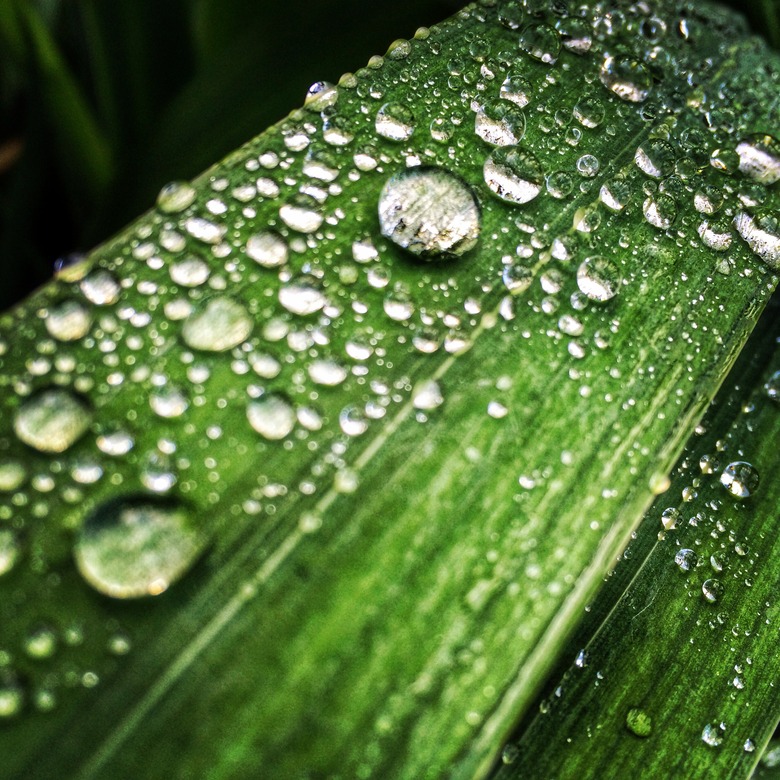Osmosis Science Activities For Kids
The concept of osmosis is taught to most grade school children at some level. Osmosis is a process wherein fluid passes through semi-permeable membranes from an area of high concentration to one of lower concentration. To demonstrate to kids how osmosis occurs in everyday objects, you can conduct simple, inexpensive experiments at home or in the classroom.
Colored Celery
Colored Celery
In this experiment, kids will be able to watch how dye is transported from a cup up through a celery stalk, demonstrating the process of osmosis. You will need a bunch of fresh celery with its leaves intact, a clear cup and food coloring.
Place twenty drops of food coloring in the clear cup, and place a stalk of celery in the dye. After a few minutes, you will be able to see the dye being drawn up through the stalk of celery, into its leaves. This is a result of osmosis, and is how many plants are able to obtain the moisture they need to live from water that is in the ground.
Vinegar and Eggs
Vinegar and Eggs
For this experiment, you will need a tape measure, clear container with a lid, one egg, large spoon and distilled white vinegar. First, measure and then record the circumference of the raw egg. Place the same egg in the container, and cover it with distilled vinegar. Allow your kids to write down their observations, then place the container in the refrigerator for 24 hours. Have the kids take a look at the egg after this time and write down what they observe, Return the egg to the refrigerator for 24 more hours.
Once the second 24 hours have passes, remove the container from the refrigerator, and carefully take the egg out of the container with a large spoon. Re-measure the circumference of the egg, and discuss the cause of the changes the kids witness.
What happened to the egg is the vinegar reacted with the calcium carbonate in the egg's shell to create bubbles. Over the 48 hours, the eggshell was dissolved by the reaction with the vinegar, although the membrane of the egg remained intact. The semipermeable membrane of the egg allowed vinegar to pass through it via osmosis. As a result, the egg itself got larger. This is a demonstration of osmosis.
Mushed Potato
Mushed Potato
To experiment with osmosis using potatoes, you will need two shallow dishes, a potato, knife, water and salt.
Fill both of the dishes with an inch of water. Add two tablespoons of salt to only one dish, while leaving the other plain. (Be sure to label which dish is plain and which has salt added to it.) Slice the potato lengthwise, so that you end up with several pieces that are flat on both sides. Place a few pieces of potato into the plain water, and an equal number of pieces into the salty water.
Allow the potatoes to sit for 20 minutes, then come back and allow the children to make their observations, and explain to them what happened.
The potatoes that were in the salt water now appear mushy because of osmosis. Due to the higher concentration of salt in the water surrounding the potatoes, the water moved from the potatoes and into the surrounding water to balance it out. This left the potatoes in the salt water mushy, while the ones in the plain water have no change to their appearance.
Cite This Article
MLA
Gaines, Melinda. "Osmosis Science Activities For Kids" sciencing.com, https://www.sciencing.com/osmosis-science-activities-kids-6364184/. 22 November 2019.
APA
Gaines, Melinda. (2019, November 22). Osmosis Science Activities For Kids. sciencing.com. Retrieved from https://www.sciencing.com/osmosis-science-activities-kids-6364184/
Chicago
Gaines, Melinda. Osmosis Science Activities For Kids last modified August 30, 2022. https://www.sciencing.com/osmosis-science-activities-kids-6364184/
